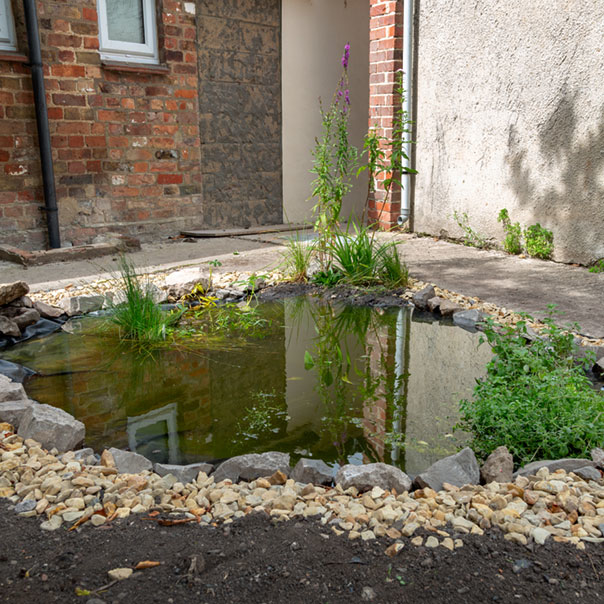Wetland wildlife in February
Winter is in its final throes and spring is on the horizon. Take a look at our guide to the wonderful wetland life that you can find this month.
After the cold of January, February is the month that starts the long struggle to close the door on winter and reach out to spring. The signs are there, if you look for them.
And you don’t need to go far. You might not have spent much time in your garden or local wetland recently, but the first signs are seen in plants; bulbs will be pushing themselves up towards the lengthening sunlight and buds appearing at the tips of branches.
The first to flower
The first to flower are the wetland specialists; lovers of wet soils, willow flowers appear as small yellow-grey catkins. On each tree you walk beneath, all flowers will be either male or female; willows are ‘dioecious’, meaning male and female flowers grow on separate trees. Between willow species, catkins vary in size, shape and colour.

Another soggy-soil dweller is the alder and like the willow, its catkins appear in early spring. However, alder is ‘monoecious’, meaning male and female flowers are found on the same tree. The male catkins are pendulous and yellow, whereas the female catkins are oval-shaped and green.
New life by the pond-full
Take a wander down to the pond. It’s the time of year where the water’s surface starts to bubble with frogs coming together to mate, creating huge clumps of frogspawn. Like toads and newts, they have recently come out of hibernation in the relative warmth of sheltered vegetation and log piles, spurred on by warmer temperatures to find water and breed. In recent years, as our winters get warmer, it’s been noted that spawning dates are becoming earlier; frogs in the south west of England are breeding as early as the last week of January.

You might be surprised to find that February is already time for the first flowering wetland plants – marsh marigold opens its large, yellow, buttercup-like flowers, a welcome treat for emerging insect life. Another welcome splash of colour at this time of year comes from the return of our oystercatchers to their inland breeding sites as the frosts recede; they’ve holidayed on the coast during the coldest weather, taking advantage of plentiful food that is guaranteed not to be frozen.
Dapper drakes
This is the best time of year to view waterbirds in their breeding finery. Drakes will be showing off to potential mates, ready to start thinking about breeding. Over the winter months, they have been busy making their plumage look as smart as possible with bright colours and extravagant plumes; have your camera at the ready. Some will also be displaying; if you’re lucky enough to get close to a group of goldeneye, watch the males vie for female attention by throwing their heads backwards, emitting a mechanical whirring sound before extending their neck up into the air.

Along with ducks, others are at it too; from now until the summer months, visit your local pair of great crested grebe for their stand-up dancing display and pond-weed gifting. Male bitterns will start to boom from deep in their reedbed homes, an audio-display to the females. Like the grebes, you’ll have a few more chances to catch up with them – they can be heard into May at least.
If you’re lucky enough to live near a grey heron nest site, breeding is likely well on the way by now. They’re one of the first birds of the year to lay, nesting in a communal ‘heronry’ in the tree-tops. By the end of April, when many bird species are just starting to breed, the young grey herons will already be fledging.

Homeward bound
And of course, towards the end of the month, we’ll be saying goodbye to our winter migrants. The ducks, geese, swans and waders that have brightened our winter skies head north and west as the days lengthen and warm. But soon, we’ll have more migrants on the way from the south; March is waiting in the wings.

Where to see February wildlife
Alder and willow can be seen flowering at wetland sites up and down the country, as can common frogs, marsh marigolds and oystercatchers.
Watch out for ducks, grebes and herons at your local wetland; you might be surprised what you find at this time of year.
Support from players of People's Postcode Lottery helps us care for our reserves and protect amazing wetland wildlife.



